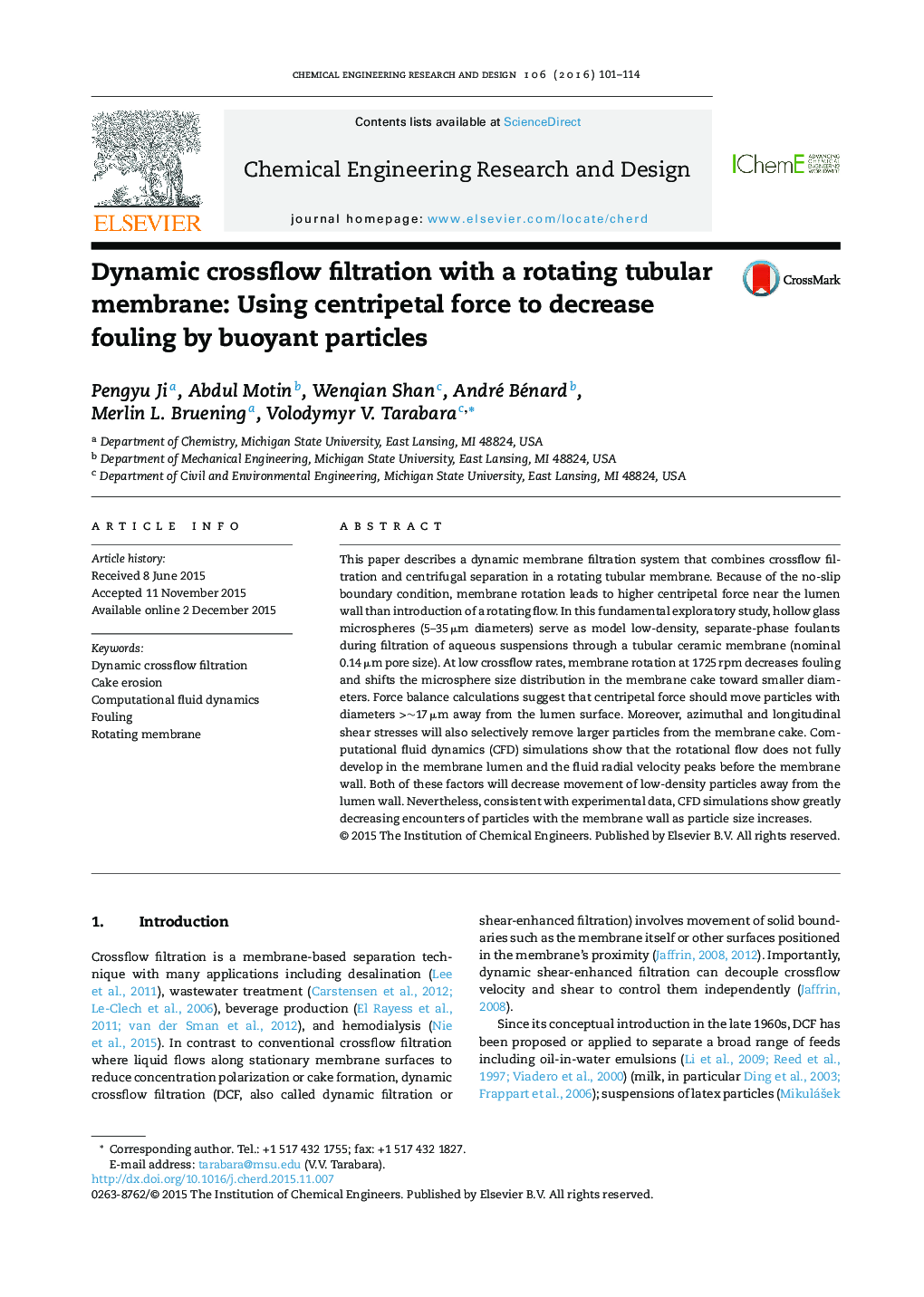| کد مقاله | کد نشریه | سال انتشار | مقاله انگلیسی | نسخه تمام متن |
|---|---|---|---|---|
| 620886 | 1455162 | 2016 | 14 صفحه PDF | دانلود رایگان |
• Rotation-induced centripetal forces move low density particles away from the lumen wall.
• Fouling by low density particles decreases when rotating a tubular membrane.
• Rotation preferentially prevents deposition of particles with large diameters.
• Shear forces dislodge large particles from the cake.
• Swirling flow does not fully develop during membrane rotation.
This paper describes a dynamic membrane filtration system that combines crossflow filtration and centrifugal separation in a rotating tubular membrane. Because of the no-slip boundary condition, membrane rotation leads to higher centripetal force near the lumen wall than introduction of a rotating flow. In this fundamental exploratory study, hollow glass microspheres (5–35 μm diameters) serve as model low-density, separate-phase foulants during filtration of aqueous suspensions through a tubular ceramic membrane (nominal 0.14 μm pore size). At low crossflow rates, membrane rotation at 1725 rpm decreases fouling and shifts the microsphere size distribution in the membrane cake toward smaller diameters. Force balance calculations suggest that centripetal force should move particles with diameters >∼17 μm away from the lumen surface. Moreover, azimuthal and longitudinal shear stresses will also selectively remove larger particles from the membrane cake. Computational fluid dynamics (CFD) simulations show that the rotational flow does not fully develop in the membrane lumen and the fluid radial velocity peaks before the membrane wall. Both of these factors will decrease movement of low-density particles away from the lumen wall. Nevertheless, consistent with experimental data, CFD simulations show greatly decreasing encounters of particles with the membrane wall as particle size increases.
Figure optionsDownload high-quality image (121 K)Download as PowerPoint slide
Journal: Chemical Engineering Research and Design - Volume 106, February 2016, Pages 101–114
